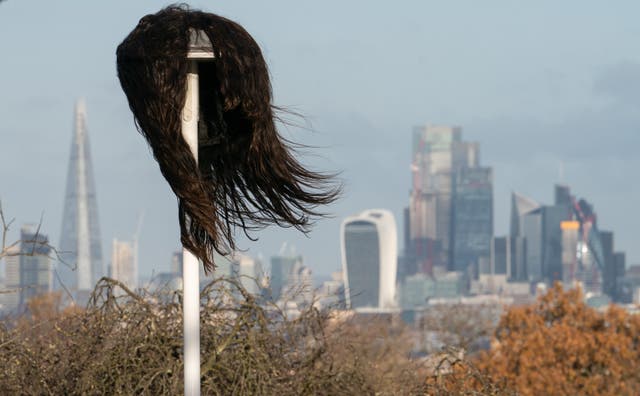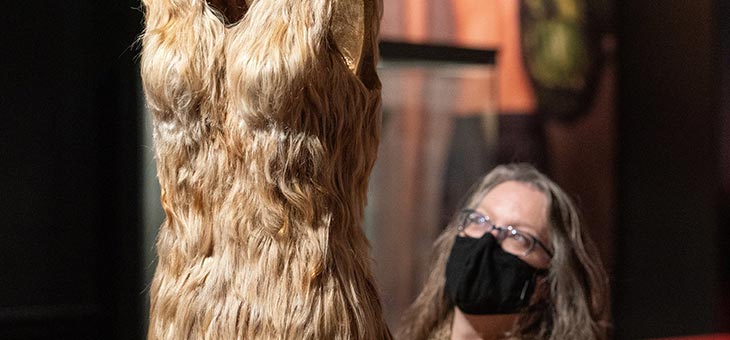To quote Phoebe Waller-Bridge in season two of the incomparable Fleabag: “Hair is everything. We wish it wasn’t so we could actually think about something else occasionally.”
A new exhibition at London’s Horniman Museum wants you to think about not just your own locks, but those of people all over the world – past, present and future.
With Hair: Untold Stories, the museum was “keen to do an exhibition on something that so many people can relate to from all different angles,” says Emma Tarlo, emeritus professor of anthropology at Goldsmiths, University of London, who curated the exhibition alongside lead curator Dr Sarah Byrne.
Looking at ways that strands are used as a fashion statement and a fibre, the show includes a dress made of hair by artist Jenni Dutton, as well as examples of innovative technologies.
“There’s a Green Salon Collective that’s trying to collect hair from salons to be able to use for cleaning up oil spills,” explains Professor Tarlo, who is also the author of Entanglement: The Secret Lives of Hair. “Equally, hair can be used for measuring the humidity of the atmosphere. Most museums actually use a hygrometer that’s often functioning on horse hair.”

Pulled from the Horniman archive, an antique hair net dates back to the time when “it was the fashion to wear them over your hair to keep your hairstyle in place”, and highlights how long the global trade in human hair has be in operation: “These were early 20th century examples of globalisation, where women in Paris and America and here [the UK] were wearing these hair nets that were actually made out of Chinese hair by Chinese workers.”
Focusing on modern hair styling, a hair shop installation curated by Korantema Anyimadu explores the experiences of black women and non-binary people.
Prof. Tarlo says: “It’s very much about having the choice really to be able to embrace your blackness as you wish, which may be through a wig or it may be through whatever you want” – while also recognising difficult experiences such as “discrimination that black women often face in relation to hair loss, where they’re often blamed for their hair loss, rather than hair loss being taken seriously from a medical perspective.”
Hair loss is a recurring theme, and all sorts of wigs are on display alongside commentary from their wearers. One green style was donated by a girl who was diagnosed with cancer and decided to cut off her hair before it all fell out and give it to the Little Princess Trust, a charity that makes wigs for children.
Prof. Tarlo explains: “The wig she chose to wear for her school prom was this bright green wig. [She said] ‘I’m not going to wear this victimhood wig, I’m going to wear this bright green wig’.”
Also addressing hair loss, another section features contributions from people local to the Horniman who connected via Zoom during the first UK lockdown in 2020.
“The group wasn’t brought together around hair loss, it was brought together around hair,” Prof. Tarlo says, “but the people who participated in it, many of them did have issues with hair loss, including alopecia, but also trichotillomania, which is a condition where you pull your own hair out.”

This resulted in impactful conversations and the sharing of different perspectives: “We were very happy to be able to incorporate those in the in the exhibition, because it’s very much people sharing those personal stories that don’t necessarily come to light, or often where there’s a lot of taboo around them.”
Would you visit a museum to see an exhibition all about hair? What’s the best exhibition you’ve seen in recent years?

